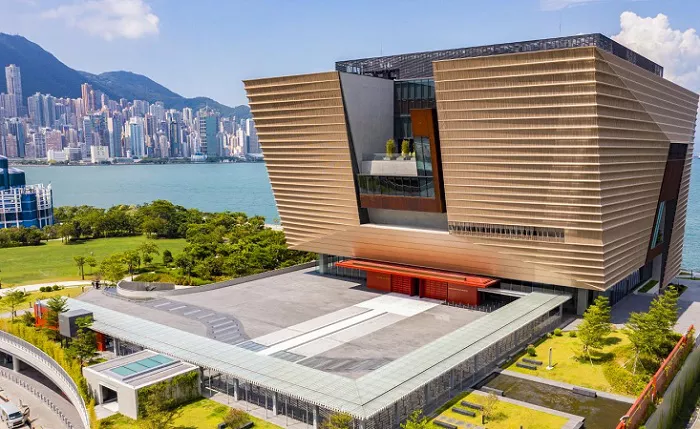Industry leaders in Hong Kong are urging the Hong Kong Palace Museum (HKPM) to expand its exhibition space and amplify the region’s unique cultural contributions to strengthen its global standing and broaden its appeal.
Located within the West Kowloon Cultural District (WKCD), the HKPM faces increasing pressure to enhance its visibility and revenue, especially as its share of the HK$21.6 billion (US$2.76 billion) in government funding for the district is projected to run out by year’s end.
Mathias Woo, artistic director of the Hong Kong-based Zuni Icosahedron theatre company and a frequent visitor to major international museums, attributed HKPM’s limited popularity to its comparatively small gallery footprint. “Its modest popularity stems from its inadequate gallery space compared to international counterparts, leading to fragmented exhibitions and insufficient depth for the subject matter,” Woo told China Daily.
Woo cited global benchmarks such as New York’s Metropolitan Museum of Art, which boasts over 2 million square feet of exhibition space, as examples of immersive cultural institutions. He identified several underutilized areas within HKPM — including its expansive lobby and staircases — as potential zones for gallery expansion.
However, Woo emphasized that physical growth alone is not enough. He said HKPM must define a distinctive identity to compete with the world’s top museums. “This uniqueness determines why visitors choose you and why peers prefer you for collaborations,” he noted.
To optimize limited resources while enhancing local relevance, Woo proposed that HKPM focus on exhibitions that explore the cultural history of Hong Kong and the broader Guangdong-Hong Kong-Macao Greater Bay Area. He pointed to the region’s rich heritage, including Louis Cha’s martial arts literature, Taoist practices, and the evolution of modern ink painting, as emblematic of Lingnan culture.
Echoing Woo’s sentiments, Francis Lui Ting-ming, an economics professor at the Hong Kong University of Science and Technology, argued that emphasizing local culture within WKCD museums could elevate Hong Kong’s soft power on the global stage. He believes that authentic cultural offerings can attract international tourists while also helping to counteract negative geopolitical narratives.
Ling Chun-kit, a standing committee member of the Chinese General Chamber of Commerce, also underscored the importance of the HKPM and the neighboring M+ museum in promoting Chinese culture through innovative artistic means.
At the opening ceremony of a joint exhibition at HKPM earlier this year, Wang Yuegong, deputy director of the Palace Museum in Beijing (BJPM), praised the development of creative cultural products with “Hong Kong characteristics” as a transformative endeavor. He noted the popularity of merchandise at BJPM’s Cultural and Creative Products Hong Kong Space, which features designs inspired by local cultural icons such as wuxia stories and Hong Kong comics, as well as avant-garde reinterpretations of traditional Chinese heritage by local artists.
Since its launch in 2023, the Hong Kong Space has attracted millions of visitors, primarily youth, to its location within BJPM, Wang added.
Ling further advocated for increased local support in promoting China’s cultural reach globally, noting that Hong Kong’s financial expertise and international connectivity uniquely position it to advance Chinese cultural products on the world stage.

